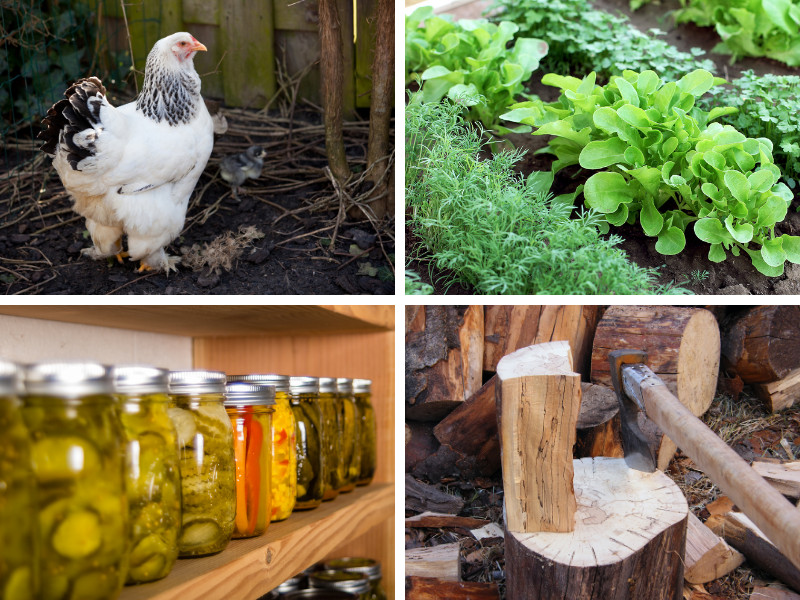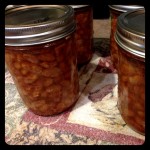Self-sufficiency has become this online buzz word of late. But what is self-sufficiency and how can we achieve it as backyard farmers / homesteaders? For me, being self sufficient is the ability to live without any (or less) modern conveniences.
Self-sufficiency is about being able to produce food, clothing, etc. without walking to the big box store on the corner and sliding your card.
I bring you 8 keys of self-sufficiency that you can work on with nothing more than your home and a backyard to work with. Now, keep in mind that some of these self sufficiency “keys” will require you looking into some of your city’s ordinances and deciding if you can do it legally or if you’ll take an educated risk.
Now many of the things I am going to talk about can be done as urban or suburban “backyard” homesteaders. But we can certainly consider a move to land out in the country!
The Pros and Cons of Leaving the City for a Country Life
How to Buy an Off-Grid Home
Where to Find Free Land in the 21st Century
Vintage Skills
Vintage skills should be on the top of your list to learn if your goal is self sufficiency:
15 Vintage Skills That Can Be Learned On YouTube
40 Vintage Frugal Tips for Your Homestead
Homesteading Skills We Need to Learn and Teach
Vintage Skills 10 More We Still Need in the Modern World
10 Important Vintage Cooking Skills You Should Have
8 Keys to Self-Sufficiency
1. Gardening
Being able to grow your own vegetables and fruit will give your nourishment and provide the seeds for you to grow continuously for years to come. While any and all vegetables and fruit will contribute to this there are a few crops that will exponentially increase the power of your self-sufficiency.
I picked these for their nutrition ease of growth, ease of storing and multi-use capabilities; without taking up too much of your precious space.
2. Protein Source
A healthy protein source is essential to creating self-sufficiency. But most of us are not going to be able to move a cow into our backyard. I have 3 suggestions that are quiet and don’t require a lot of space to raise them happily and naturally.
Chickens – You can raise both meat birds and laying hens but chickens do take up a lot more space than quail. But they also produce larger eggs and a great portion of meat for the space they take up. Backyard chickens are a wonderful addition to any home not only for their food productions but they will eat bugs and small rodents, turn your compost as well as add to it.
Backyard Chickens 101
Secret Backyard Chickens How to Keep a Stealth Coop
Chickens in the Garden
Quail – both an egg and meat source. Quails start laying eggs around 6 – 8 weeks and are ready for butcher around that same time. They are egg laying machines – about 300 eggs per hen per year. Because of their size they can be housed in a lot less space than a chicken. Some choose cages but quail can be raised in flocks in a small coop too – they like eating bugs so a tractor might work for you.
The Nitty Gritty Basics on Raising Quail
Rabbits – a perfect backyard meat source. Quiet and efficient, the rabbit is a perfect livestock for the backyard farmers. With a trio (2 does and a buck) you can produce a freezer full of meat every year. A healthy doe can produce approximately 215 lbs of clean, healthy protein (similar to chicken in flavor and texture). And they reproduce their own replacements! 😉
There are lots of options for raising rabbits from cages to colonies, depending on your available space. If you live in a warmer climate you’ll need to be sure you have a way to keep your buns cool (frozen water bottles, fans, lots of shade, etc). Not to mention their poo will help your garden…score!
See: Top 10 Meat Rabbits , Getting Started with Meat Rabbits and Breeding Meat Rabbits
3. Composting
I know you asking yourself how composting can be a key of self-sufficiency, right? But composting has several uses:
- Reduces your garbage. If you’re going to be truly self-sufficient you’re going to need a plan for your garbage/waste. Compost is an easy way to use a lot of the stuff you’re currently tossing into the garbage.
- Create soil enrichment. When you’re planting in the same area year after year, you’re going to risk depleting the soil. Compost invigorates the soil food web and enriches the soil for healthy, vigorous plants.
How to Compost
10 Things You Never Want to Compost
How to Improve Soil Without a Compost Pile
My Cheap and Easy Compost Bin
4. Food Storage
You can grow all the food in the world, but if you don’t have a long term storage plan then it won’t do you much good. The freezer is great, but you should have other options for true self-sufficiency. You need storage that don’t require any electricity too.
- Root Cellar – a traditional root cellar is dug out from the ground and is used to keep fruit, vegetables and other foods. But this isn’t going to be easy to do in a backyard situation. You could use a basement or even a dark closet, possibly. Here is AZ you won’t find many root cellars or basements but my closet under the stairs stays pretty cool and dark all year round.
Root Cellar Alternatives
Build Your Own Underground Root Cellar
- Canning – canning is an awesome long-term storage solution. You don’t need a lot of equipment to do it and it is fairly easy to learn. I recommend getting a good pressure canner, which can also be used for water bath canning as well. I would not can without the bible of canning at my side – Ball Complete Book of Home Preserving

Water Bath Canning 101
75 Free Canning Recipes for Beginners and Experienced Canners
Common Canning Mistakes that Need to be Fixed - Dehydrating – another way to preserve your meats, fruits and vegetables is via drying or dehydrating. I have a simple dehydrator, nothing fancy but it gets the job done. However you should also consider learning how to solar dehydrate in something like the Sun Oven.
Dehydrating Apples at Home
Ground Beef Jerky Recipe
Food Dehydrators What You Need to Know
How to Make Celery Powder
Make and Use Mushroom Powder
Making Tomato Powder
5. Dairy Supply
A dairy supply can really up your self-sufficiency, and make it all the more delicious. Again a cow isn’t going to be a great option for your backyard or small property but a mini goat certainly could be.
Dwarf Nigerians – This little powerhouse is compact but can give you several cups of milk everyday. Creamy and delicious, their milk is great for drinking, making cheese and adding to your coffee. 😉 They’ll need 30 – 40 square feet and most will be unhappy without a companion. Also your doe will need regularly “freshening” to keep her in milk. So make sure you have access to a buck.
See: The Best Dairy Goats for Beginners for more information
Goats, usually boer, can also be a meat option.
See: 5 Benefits of Raising Meat Goats
6. Non-Electric Cooking
True self-sufficiency means you can survive without dependence on electricity.
Solar Oven – I cook with Sun Oven all the time. I especially like to use it during the summer months, when I don’t want to heat the house up. You can certainly make your own solar oven but my tries were never quite as good at conducting heat. You can use a solar oven to dry foods out too, making it a great part of your self-sufficiency plan.
See: Sun Oven Cooking and Tips, Slow Roasted Rabbit in the Sun Oven and Baking Bread in the Sun Oven
Smoker – A smoker can help you cook and preserve food. There are propane options but then you need a way to store propane safely. I think a good wood smoker is a better long-term option. The ready-made varieties require charcoal but are much more compact that something you would build yourself.
7. Repairs:
Basic Home and Auto Repair
To truly be working on self sufficiency you have to be working on a myriad of skills. Again, not a lot of explanation needed. If you are relying on your own skills you need to be able to use tools and understand basic repair. It sure helps if you can build structures as well.
Clothes Production & Clothing Repair
Self sufficiency isn’t all food oriented. If you’re going to be self-sufficient you need, at the very least, to know how to repair your clothing. Your plan should be to learn how to sew from patterns and how to sew by hand when electricity isn’t available. Take it a step further and learn to knit and crochet for warm clothing and blankets.
8. Herbal Remedies
Self sufficiency should include some home and herbal remedies. I highly recommend getting educated in herbs with the The Herbal Academy.
- Medicinal Garden What to Plant
- Creating a Natural Pharmacy
- The Best Medicinal Herbs to Have in the House.
Keys to Self-Sufficiency – Extras You Might Want to Consider
Here are a few “extras” you might want to consider in your self-sufficiency plans.
- Beekeeping – Beekeeping, Before You Get Bees
- Community of homesteaders for bartering, breeding livestock and learning skills:
How to Start a Homesteader Exchange and Homesteading Mentors - Producing energy / fuel
- Protection
- Learn to recycle, re-purpose and reuse things around your homestead
How to Reuse Egg Shells
Use 5 Gallon Buckets on the Homestead
How to Reuse Banana Peels





